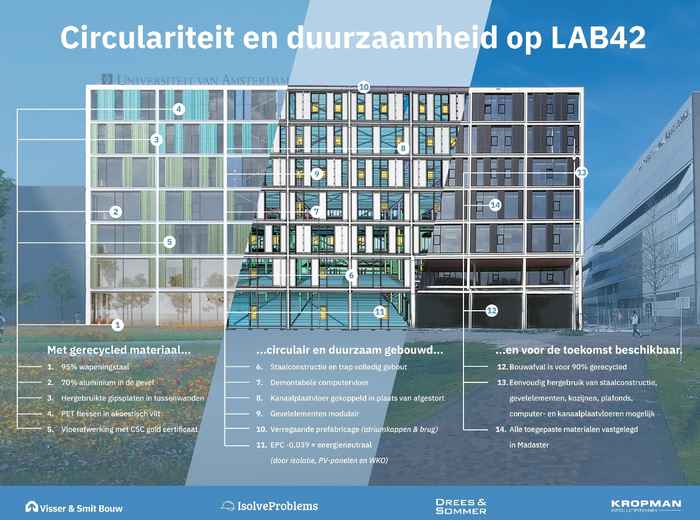LAB42 handed over to the UvA
31 July 2022
Sustainable
LAB42 is an energy-neutral (ENG) building of almost 15,000 m2. This means that the building produces as much energy as it needs. Around 1800 m2 of solar panels have been installed on the roof and the façades. In order to place solar panels over the entire roof surface, the air-conditioning units that would normally be located on the roof have been moved to a lower floor. Solar cells have even been incorporated into the glass of the skylights/roof windows. The building also has a geothermal heat pump (GHP) system and generates fewer CO2 emissions. This is because of its retention roof, which collects rainwater (reducing the burden on drains) that is subsequently reused for flushing toilets in the building.
Circular and flexible
The support structure of LAB42 is circular and consists of a 95% reusable steel structure that serves as a rack. The steel structure is easy to adapt and reconfigure in line with future changes. The hollow-core slabs have not been poured into place, but are connected and detachable. The computer floor that has been installed can also be removed and reused elsewhere in due course. Many parts, such as the façade, are modular and prefabricated. In addition, no unnecessary material has been used in LAB42 to conceal or close the structure. The material that has been used in addition to the construction material is sustainable. For example, felt from recycled PET bottles has been used to make panels to improve the acoustics and a significant percentage of the walls are made from used plasterboard.
